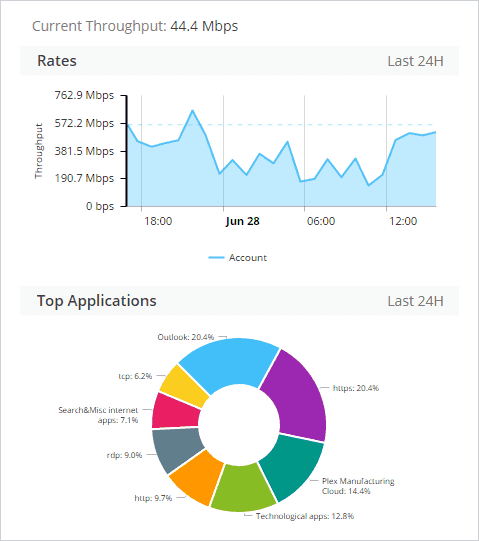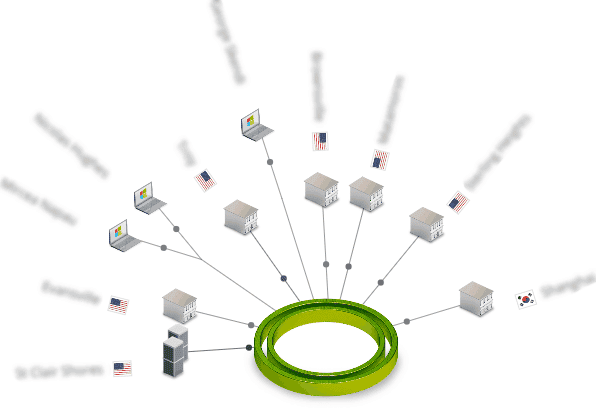Manufacturing
Fisher & Company Slashes MPLS Costs, Improves WAN Performance with Cato’s Cloud-Based SD-WAN
The Challenges with Legacy MPLS
Like many companies, Fisher & Company relied on MPLS for its global network. And like many companies, Fisher was tired of the high costs, limited bandwidth, and complexities of MPLS services.
The company spent $27,000 a month for a managed, secure MPLS service. The company’s 10 Mbits/s connection from the US to Mexico alone cost $7,000 per month. And three Riverbed WAN optimizers meant a one-time outlay of nearly $60,000 with an annual renewal of $7,000.
With stacks of appliances, including firewalls, WAN optimizers, and routers, comes complexity and a breeding ground for problems. “Our MPLS provider proposed this very intricate architecture that looked like it was from a CCNA test,” says Kevin McDaid, systems manager at Fisher & Company.
“The sites ended up with dual routers running HSRP (the Hot Standby Router Protocol) to load balance traffic between them. But when the protocol failed, so did the location.”
Survivability was a challenge in other ways as well. Backhauling traffic across the MPLS network created a single point of failure. “When the provider’s MPLS router failed, we lost our headquarters and the entire company stopped working,” he says. “I was woken up in the middle of the night on several instances because a fiber cut or power outage had taken down a site, or to get the provider to fix a minor firewall problem.”
Finally, managing the MPLS and security infrastructure was painful. McDaid and his team had to jump between “tons” of management interfaces, he says. They could monitor firewalls and the network, but the provider had to make any changes. “Something as simple as enabling access to a website through our firewall meant having to call support. It was very frustrating.”
Cato Cloud: As Good as MPLS at a Fifth of the Price
Fisher began looking at SD-WAN as an alternative. “We trialed a managed SD-WAN service, but the provider was difficult to work with,” says McDaid. “The management console was very complicated and you needed training just to run the reporting. They wanted us to submit requests for configuration changes; it was like our MPLS provider all over again.” Instead, Fisher turned to Cato. Cato’s SD-WAN service integrates advanced security with an affordable global, SLA-backed backbone — the Cato Cloud. With Cato, McDaid could retain control over his network and security infrastructure yet gain the agility and scaling benefits of a cloud service.

Cato Improves User Experience and Simplifies Network Management
Despite paying so much less for Cato, Fisher maintained and even improved its application delivery. Call quality has not changed since moving voice from MPLS to the Cato Cloud. Applications have become more responsive. “Users definitely feel it in their user experience. Things, like screen refreshes of our ERP system, seem to be a lot quicker with Cato,” he says.

The improvement was enabled by the additional bandwidth and the Cato Cloud’s network characteristics. “The loss and latency of the Cato Cloud are comparable to our MPLS service,” he says.
Management has also become much easier. The Cato Management Application gives McDaid full control over his network and security infrastructure. And instead of jumping between many consoles, McDaid can manage everything from one interface.

Resiliency improved with Cato. Internet- and cloud-bound traffic are no longer backhauled to Fisher’s headquarters in Michigan, which created the single point of failure in Fisher’s old network design. Dual active lines connect every location to Cato’s fault-tolerant architecture. Internet- and cloud-bound traffic are sent directly onto the Internet; enterprise WAN traffic is sent across Cato’s optimized backbone to the appropriate location.

About Fisher & Company
The manufacturing company has 1700 employees and is headquartered out of St. Clair Shores, Michigan. There are three other US locations — Michigan, Indiana, and Texas — and five more international locations — China, India, Germany, Mexico, and Poland. An instance ran in the Azure cloud.
The sites in Mexico and Texas were connected via MPLS to the St. Clair Shores headquarters. All locations except for Texas had direct Internet connections, secured with local, provider-managed firewalls. Applications included ERP from Plex Systems, Microsoft Office 365, Nasuni for file replication, and voice from ShoreTel, Inc.








